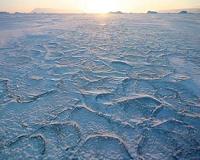| . |  |
. |
Jakarta (AFP) July 2, 2010 The only glacier in the western Pacific could disappear in less than five years, taking with it vital clues about the earth's changing climate, a US scientist said Friday. Ohio State University Professor Lonnie Thompson has just completed what he calls a "salvage mission" to extract ice cores from the glacier on Punjak Jaya, which soars above the tropical, reef-fringed waters of eastern Indonesia. The ice core samples he collected after his 13-day trip to the Papuan central highlands are set to be shipped back to Chicago on Wednesday for further analysis. But Thompson said one thing is clear: the glacier is dying. "This is the only ice in the western end of the Pacific warm pool, which is the warmest water on earth. When it melts that history (from ice cores) is lost forever and there's no way we can recapture it," he told AFP. "My biggest concern is that we may be too late to capture that history. Some is already missing from the top and from the bottom. How much of that history do we still have?" Thompson estimated the glacier is disappearing at a rate of seven metres (22 feet) a year. As it is only about 32 metres deep, it could be gone in four or five years. "Looking at the loss of ice that's been occurring since the 1830s we thought that we were looking at decades (before the Punjak Jaya ice disappeared)," he said. "But I've never been to a glacier anywhere else in the world where it rains every day... If it rains on a glacier then that's the death of the glacier." One of the world's leading experts, Thompson has visited glaciers from Kenya to Peru. But he said he had never seen anything like what he experienced in Papua, where the ice was visibly melting under his tent. "It's the first glacier that I've visited where you can hear the water flowing underneath the ice," he said. The 88 metres of ice samples from his expedition will be added to the Ohio State University's valuable archive of tropical ice cores, where it will remain available for researchers years after the glacier itself may have gone. The study of glacier ice reveals evidence of past climate fluctuations, which can then be referenced with samples from other parts of the planet to get a better understanding of current climate change. "We hope to be able to reconstruct past temperatures, look at the history of the ice here and compare that with ice from around the world, particularly with ice from the other side of the Pacific Ocean," Thompson said. He said he hoped to publish his findings early next year.
Share This Article With Planet Earth
Related Links Beyond the Ice Age
 Answer To What Ended The Last Ice Age May Be Blowing In The Winds
Answer To What Ended The Last Ice Age May Be Blowing In The WindsNew York NY (SPX) Jun 28, 2010 Scientists still puzzle over how Earth emerged from its last ice age, an event that ushered in a warmer climate and the birth of human civilization. In the geological blink of an eye, ice sheets in the northern hemisphere began to collapse and warming spread quickly to the south. Most scientists say that the trigger, at least initially, was an orbital shift that caused more sunlight to fal ... read more |
|
| The content herein, unless otherwise known to be public domain, are Copyright 1995-2010 - SpaceDaily. AFP and UPI Wire Stories are copyright Agence France-Presse and United Press International. ESA Portal Reports are copyright European Space Agency. All NASA sourced material is public domain. Additional copyrights may apply in whole or part to other bona fide parties. Advertising does not imply endorsement,agreement or approval of any opinions, statements or information provided by SpaceDaily on any Web page published or hosted by SpaceDaily. Privacy Statement |